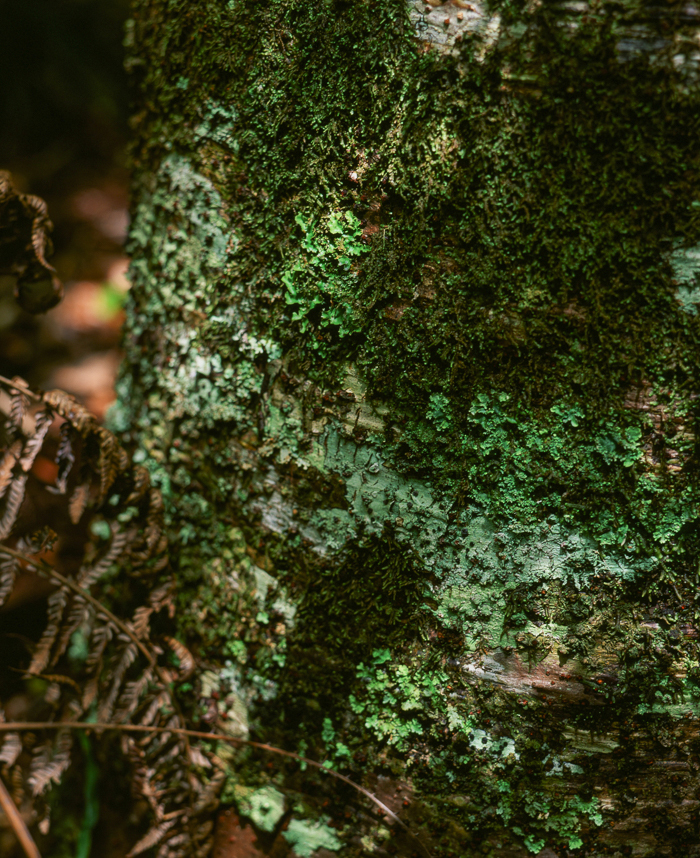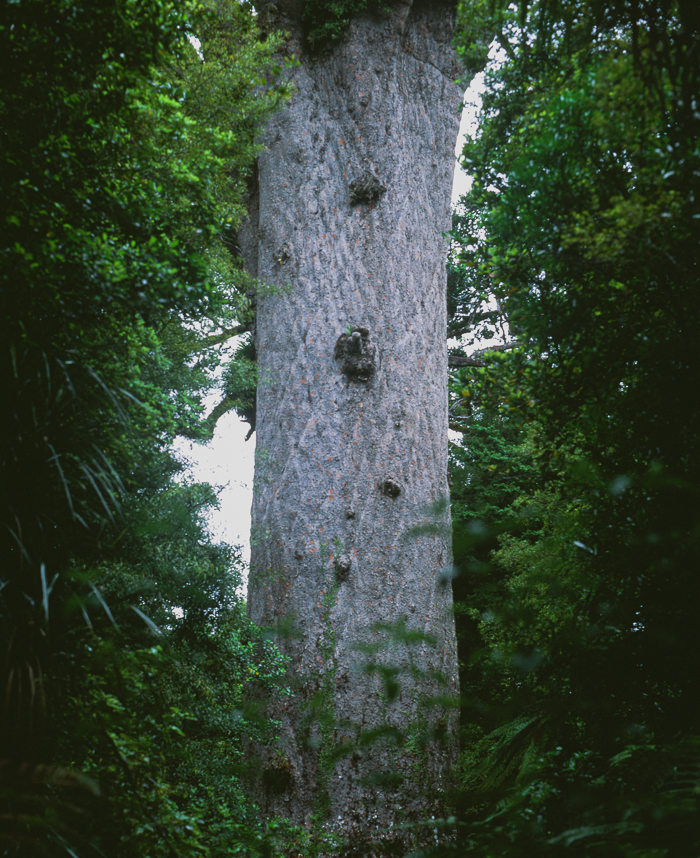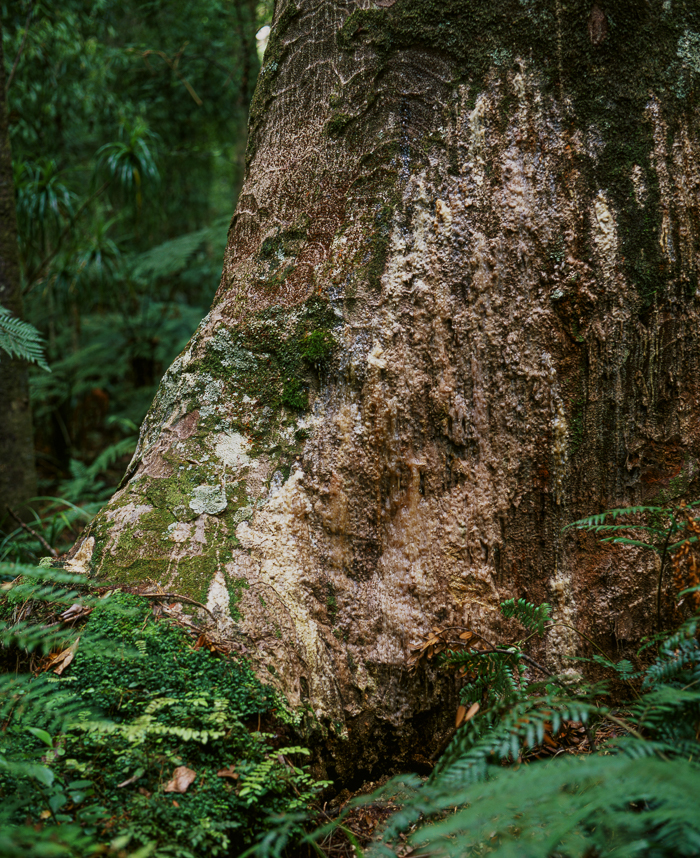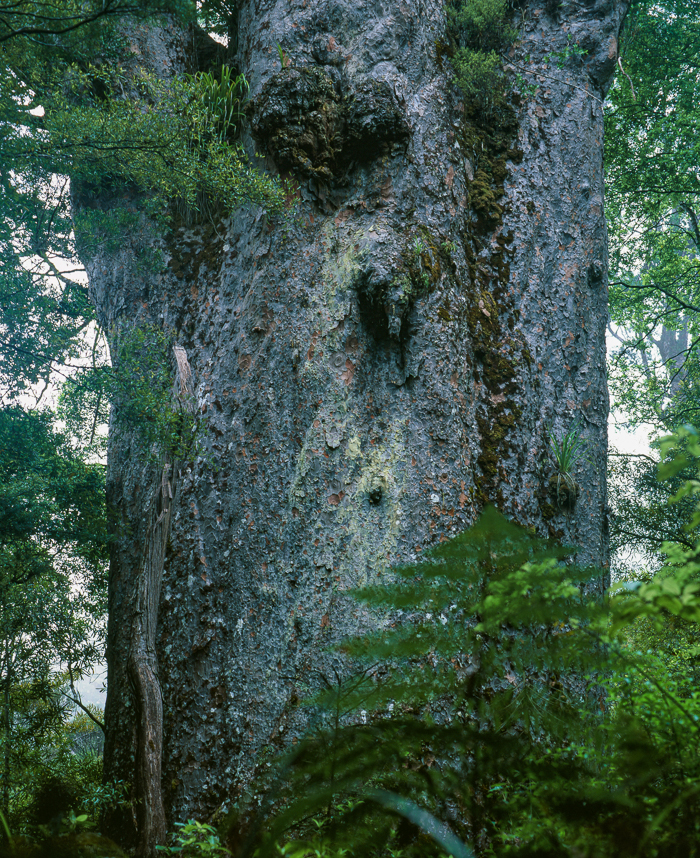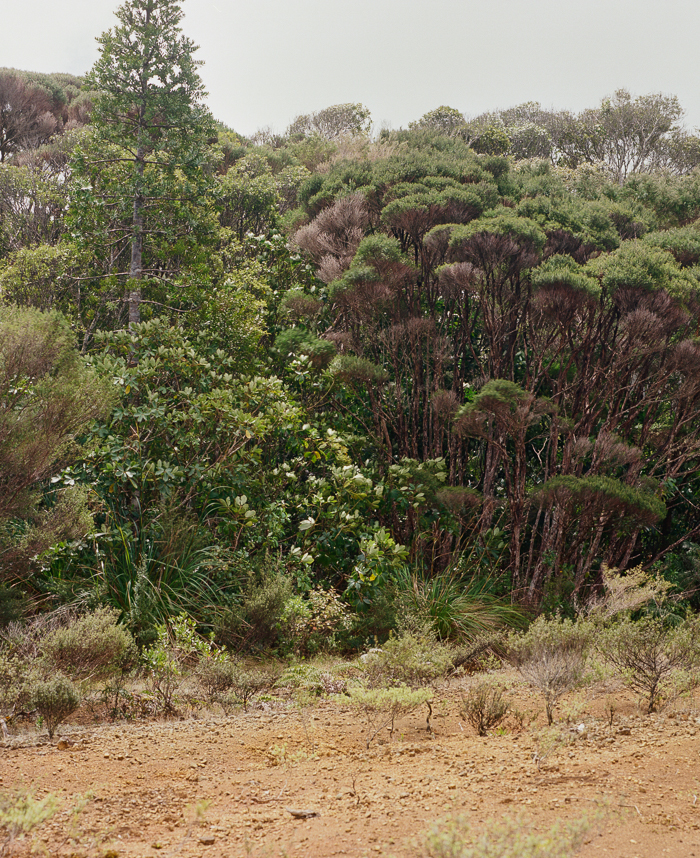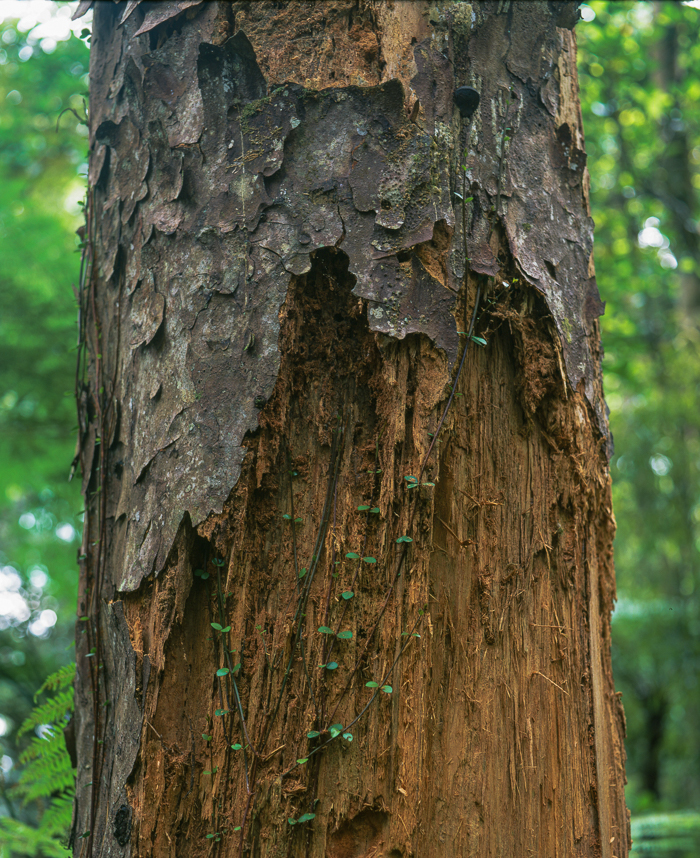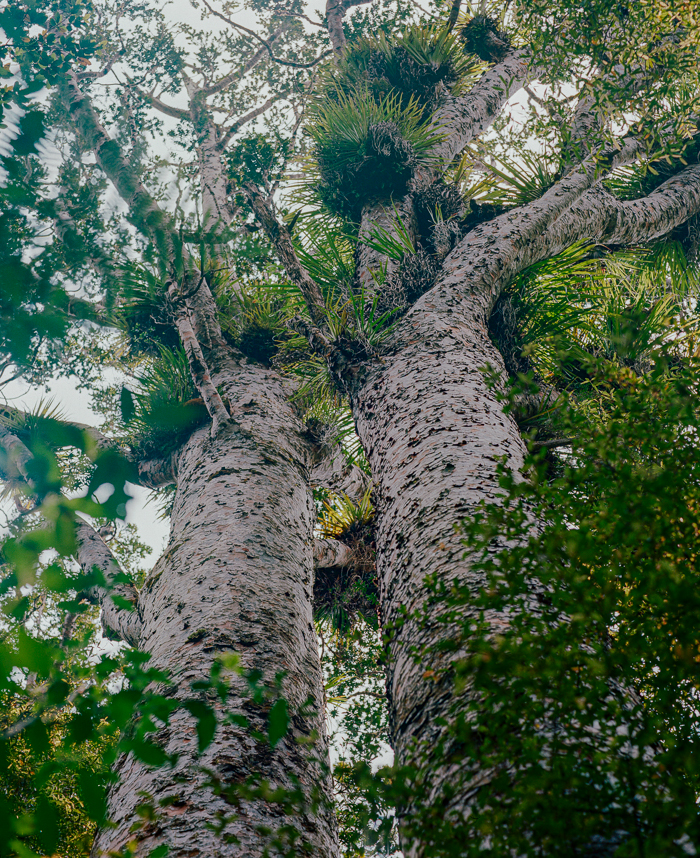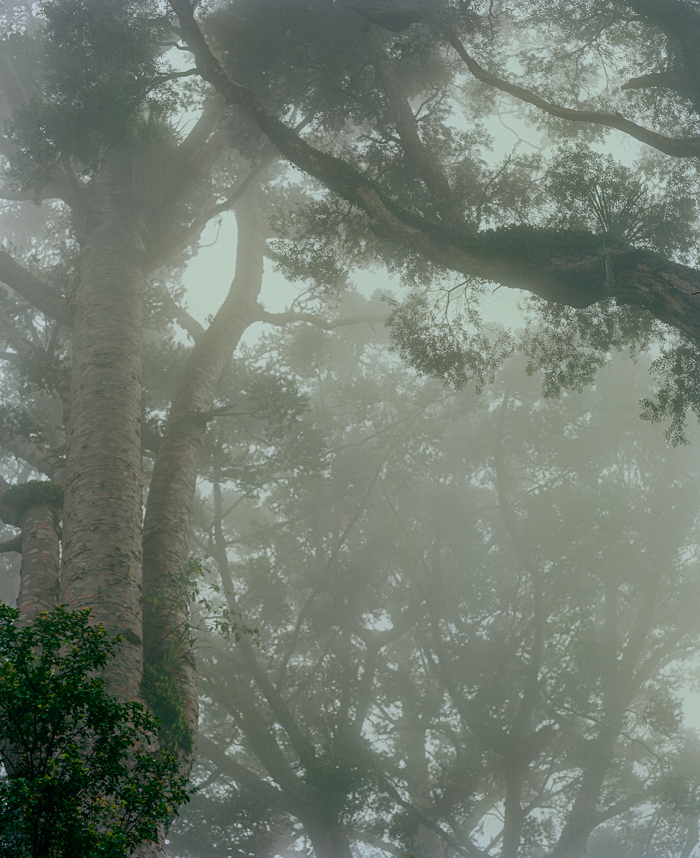
Contemporary
Shifts
Into the 21st Century: Waitangi Tribunal, Whanganui River & Wai 262
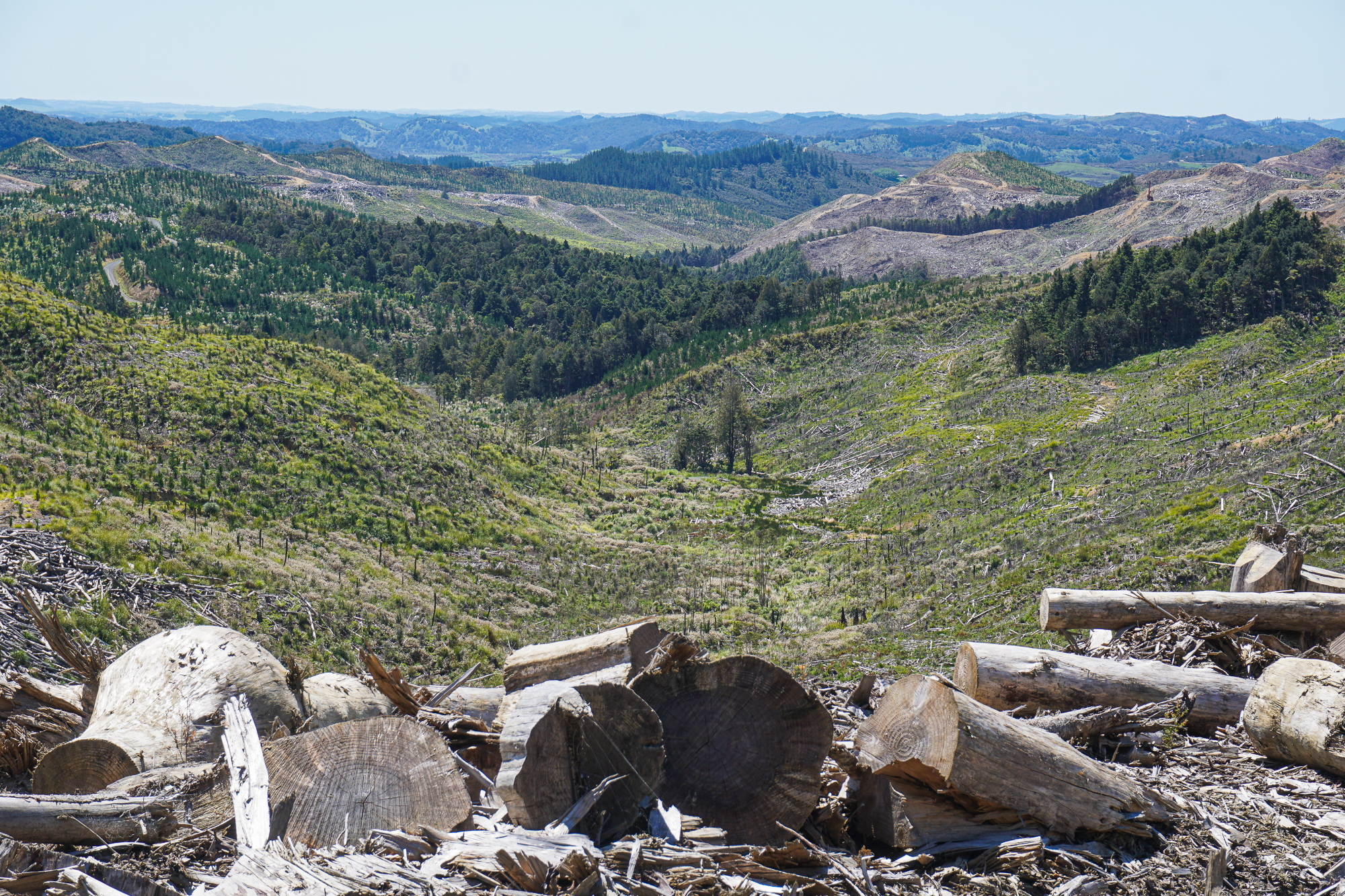
“All the land we are on is just over 1,000 hectares and even though our tūpuna, our ancestors, lived on it, we still have had to buy it back. It’s taken three generations. My grandmother had land taken under legal means, under laws constructed at the time– it wasn’t just my grandmother that owned the land, her brother lived on it as well. They ended up having to pay for a survey that they didn’t want or they had to get a title for their own land and if they didn’t they were basically kicked off their land and the land was leased to a white man and the white man farmed it and paid a rent or lease money to the Māori Land Board [normally made up of Pakeha people]. And the Māori Land Board paid out, first they paid themselves, and what was left over was paid to the Māori land owners. So, my grandmother bought some land back and my dad bought some land back and then I’ve bought land back. Now [we have] all the land that they used to own.”
– Kevin Prime, Ngāti Hine kaumātua
Many Māori maxims describe the human connection to land. I frequently heard the proverb: Ko au te whenua, ko te whenua ko au. Ko au te awa, ko te awa ko au. I am the land, the land is me, I am the river, the river is me...
Today, Kevin Prime works for the government in the Environment Court, but he has also served as a special advisor on the Māori Land Court and led mediations for the Office of Treaty Settlements and the Waitangi Tribunal, often through facilitations with tribes disputing land boundaries or ownership. The Waitangi Tribunal (WT), largely a commission of inquiry, investigates, reports on, and offers ways the Crown can resolve the grievances brought by over one hundred tribes in Aotearoa since it was established in 1975 by the Treaty of Waitangi Act. In the WT facilitations, iwi present claims for wrongs done in the last century or two and although a bureaucratic avenue for addressing land grievances that trace back to the signing of the Treaty is far from expedient, at least every case that Kevin has worked has favored the Māori applicants.
While claims to the Tribunal usually remain in the system for long periods before settlements are reached, there is a silver lining. Kevin identified recent legislation that has started to recognize and codify the ancient connection to the land that past governments ignored by granting personhood to the landscape. The legislation, the Te Awa Tupua Act, is the result of the Whanganui River claim brought to the Waitangi Tribunal by Whanganui iwi.150 “Te Awa Tupua (Whanganui River Claims Settlement) Act 2017.” Under the historic Te Awa Tupua Act, the Whanganui river and the Taranaki mountain legally became people. It is the outcome of one of the longest legal battles in the New Zealand history and includes an apology from the Crown for its wrong-doing and an acknowledgement that their breach of the Treaty undermined the ability of Whanganui tribes to exercise their customary rights and responsibilities in respect of the river that has provided both physical and spiritual nourishment to Whanganui iwi and hapū from time immemorial.151 Kennedy Warne, “A Voice For Nature.”
In the 1800s, 143 Whanganui tribes occupied the strip of land between the river and forest, all of them deeply connected to the waterway and knowledgeable of its marine life, navigable rapids and taniwha (spiritual guardians) that presided in each river bed. The fourteen Whanganui river Rangatira that signed the Treaty of Waitangi in May of 1840 would, undoubtedly, have considered the Whanganui river a treasure protected under the guarantee of paramount authority for time immemorial over their lands, habitations and all that they treasured, as it is stated in the Treaty. After all, the river was their primary source for food, medicine, spiritual guidance, transport and defense against tribal enemies.152 Warne, “A Voice for Nature.”
In 1848, the colonial government asserted its authority over the river when the Crown purchased 86,200 acres of land at Whanganui that encompassed the lower reaches of the waterway. In the wake of the acquisition, numerous wrong-doings evocative of the Public Works Acts of 1864 and 1876 have fed the Crown’s effort to extinguish the Whanganui tribes’ customary ownership of the riverbed, many of which used the guise of development and infrastructure, and claims that previous agreements nullified tribal authority as a defense.153 “Whanganui Iwi (Whanganui River) Deed of Settlement Summary.” See section “Background.” In 1891, after decades of poorly-managed structures destroyed the river systems, Parliament passed the Whanganui River Trust Act to conserve and protect the remaining natural scenery and navigability of the river. Though the Whanganui River Trust Act stipulated that it wouldn’t obstruct Māori rights included in the Treaty, there was no provision for Māori membership on the Trust’s board and no Māori were consulted in the construction of the legislation. Further, in 1903, a clause in the Coal-mines Act Amendment Act asserted that the beds of all navigable rivers be placed under Crown ownership.154 “Whanganui Iwi Deed of Settlement Summary.” See section “Background.” No Whanganui iwi were consulted over the legislation.
Citing injustices from the 1840s to the present, Whanganui iwi have continuously sought retribution for their grievances and protections for the Whanganui river. They have petitioned for recognition of their customary rights and appealed for compensation for damages done to their waterways. Over the last century, those grievances have been reviewed by Parliament which then delegated the claims to the Native Land Court, Court of Appeal, Royal Commission, Supreme Court and Crown Orders in Council, all to no avail. By 1988, the Whanganui River Māori Trust Board was created and tasked with negotiating the settlement of all the Whanganui iwi claims thus far.155 Whanganui Iwi Deed of Settlement Summary.” See section “Background.” Two long years later, the Whanganui River Māori Trust Board lodged a comprehensive claim with the Waitangi Tribunal on behalf of all who affiliate with Whanganui iwi and represented Whanganui iwi in negotiations with the Crown. The culmination of the century-long battle by Whanganui iwi to protect its ancient relationship with the river is Ruruku Whakatupa (the Whanganui River Deed of Settlement). The legislation declared that the river is a living being, stating that Te Awa Tupua (the river and all its physical and metaphysical elements) is a living whole and possesses the same rights and liabilities as a legal person.156 “Whanganui Iwi Deed of Settlement Summary.” See section “Background”; Warne, “A Voice for Nature.”
Ruruku Whakatupua–Te Mana o Te Awa Tupua (the Whanganui River Claims Settlement Act), settles iwi claims regarding the Whanganui river and includes payment of financial redress to the Whanganui iwi in recognition of their settlement and to help advance the future health and wellbeing of the river and iwi. The Whanganui River Claims Settlement Act was ratified in August of 2014 and signed into legislation in 2017.157 “Whanganui Iwi Deed of Settlement Summary.” See section “Redress” and subsection “Ruruku Whakatupua – Te Mana o Te Awa Tupua.”
The legal mechanisms the New Zealand government used to imbue nature with legal rights in the Whanganui River case (and to the Te Urewera National Parks in 2013) joins a practice shared by nations like Ecuador, Bolivia, India and the United States. The rights of nature (RON) approach, and the related community rights movement that has formed within tribal nations of the United States, is instrumental in protecting natural landscapes against corporate interests and encroachment. An RON framework, whether in statutes, constitutional amendments or legislation like Ruruku Whakatupa, and the incorporation of customary law into formal governing mechanisms enables the customary rights and responsibilities of indigenous peoples to become lawfully enforceable, protecting biodiversity including taonga species used for traditional medicine.158 Dina Gilio-Whitaker, As Long as Grass Grows: The Indigenous Fight for Environmental Justice from Colonization to Standing Rock, 154-155.
The Whanganui River resolution, while deemed a victory for Māori, was the result of a long-fought battle. Just as the Whanganui iwi spent decades defending their customary rights and advocating for their river, many other claimants face decades of navigating the annals of government before their rights are recognized by the Crown. For instance, the steadfast cohort of Wai 262 claimants:
“The Wai 262 claim, it’s not only about endemic flora and fauna. It’s about all of Māori culture against all of government.”
– Hori Parata, Ngātiwai kaumātua
Wai 262 was a Waitangi Tribunal claim lodged in October, 1991, regarding the recognition of rights and place of traditional Māori knowledge, culture, customs and relationships with the natural environment as they are considered in the Crown’s existing laws, policies and practices.159 “Ko Aotearoa Tēnei: Report on the Wai 262 Claim Released.” See section “Wai 262: Questions & Answers.” While the claim concerns who controls Māori traditional knowledge, artistic and cultural works like the Ka Mate haka (posture dance performance), waiata (song or chant), and koru (unfolding fern frond), and the landscape that fosters Māori culture, it also concerns the place in contemporary life of core Māori concepts like the obligation of iwi and hapū kaitiakitanga (guardianship) toward mātauranga Māori, taonga works such as artistic and cultural works, sacred sites, and taonga species and flora and fauna, like the kauri and whale, that are intrinsically tied to iwi identity.160 “Te Pae Tawhiti: Wai 262.”

The 262nd claim lodged in the Tribunal, Wai 262 is commonly referred to as the ‘flora and fauna claim.’ The original set of claimants argued that their rights to control, manage and utilize indigenous flora and fauna and the genetic resources they contain were guaranteed in Article 2 of the Treaty of Waitangi (where the chiefs were confirmed and guaranteed the exercise of chieftainship, or te tino rangatiratanga, over their lands, villages, and ‘taonga katoa’ – all treasured things) and that the Crown failed to protect the interests of Māori when they denied them proprietary interests in those flora and fauna, notably through cultural intellectual property laws and agreements.161 Kelly Buchanan, “New Zealand: Māori Culture and Property Laws.”
The latter clause, like the outcome of the Whanganui claim, is a historic development in itself. Prior to Wai 262, the notion of intellectual property had never been directly addressed by the Tribunal. While all previous claims reviewed by the Waitangi Tribunal focused on the settlement of historical grievances caused by the Crown’s actions, Wai 262 was the first inquiry to specifically address and make recommendations based on the contemporary relationship between Māori and the Crown. Despite the fact that Wai 262 focused on contemporary grievances, the historical precedents of the claim were also considered in the review process. Therefore, when it was lodged in 1991, priority was given to district hearings to settle those historical Treaty grievances first. Once the claim finally reached the Tribunal, a string of bureaucratic hurdles including arguments between the Crown and claimants, the precarious health of the presiding officer, adjustments to changing laws and policies, and competing egos all contributed to a drawn out inquiry.162 “Ko Aotearoa Tēnei: Report on the Wai 262 Claim Released.” See section “Wai 262: Questions & Answers.”
In 2011, two decades after it was initially lodged, the Tribunal responded to the Wai 262 claim with a report entitled Ko Aotearoa Tēnei: A Report into Claims Concerning New Zealand Law and Policy Affecting Māori Culture and Identity, also known as the Wai 262 Report. Ko Aotearoa Tēnei translates to This is Aotearoa or This is New Zealand and is the first whole-of-government report the Tribunal has released. It addresses the work of over 20 different government departments and agencies in its recommendations which include amendments to the Crown’s laws, policies and practices covering Te Reo Māori, resource management, wildlife conservation, cultural artifacts, environmental protection, plant varieties and patent laws.
Ko Aotearoa Tēnei encourages the establishment of:
- Partnership bodies for education, conservation, culture and heritage.
- A new commission to protect Māori cultural works against derogatory or offensive uses and unauthorized commercial uses.
- A new funding agent for mātauranga Māori in science.
It also expands the roles of existing bodies like Te Taura Whiri (Māori Language Commission), Te Paepae Matua mō te Rongoā (National Rongoā Body), and other Māori advisory bodies concerning patents and environmental protection.163 “Ko Aotearoa Tēnei.” See section “Wai 262: Questions & Answers.”
Ko Aotearoa Tēnei is pivotal because it signals to all of New Zealand the opportunities and challenges that exist in the post-settlement era. Primarily, it offers the framework for an innovative and more comprehensive strategy for governance than has existed in the past. After all, for the country to thrive both economically and through the wellbeing of its inhabitants, the Crown must work with Māori to better support their taonga works and species and mātauranga Māori. Luckily, the government responded to the report by initiating the kind of holistic approach that it calls for.164 “Te Pae Tawhiti: Wai 262.” Starting in April, 2019, NZ Cabinet officially agreed to develop an all-of-government approach to the issues raised by Wai 262. By July, 2019, the Minister for Māori Development, Minister Mahuta, held an initial discussion with representatives of the original Wai 262 claimants.
During my time in New Zealand, the first stage of comprehensive government action was already underway. From August to October, 2019, targeted engagement discussions between the Crown and Māori technical experts, Māori advisory boards and national Māori bodies, and subject specialists took place at the Iwi Chairs Forum. From that targeted engagement, Te Puni Kōkiri (the Ministry of Māori Development) collected feedback to form preliminary proposals of the Crown’s organizational approach to Wai 262, called Te Pae Tawhiti. Meanwhile, the government organized itself around three broad kete of issues – perhaps a tribute to the Three Baskets of Knowledge in early Māori mythology (see chapter I). Each kete drew on key terms featured in the Ko Aotearoa Tēnei report – Taonga Works, Taonga Species & Kawenata Aorere/Kaupapa Aorere, the latter with an international focus.165 “Te Pae Tawhiti: Wai 262.”
In their preliminary proposal, the government suggested that work in each area be overseen by portfolio Ministers and that a Ministerial Oversight Group be formed to shepherd the work program as a whole. The report from Te Puni Kōkiri, Wai 262 - Te Pae Tawhiti: Targeted Engagement Report – Preliminary Proposals for Crown Organization, addresses next steps to develop a coordinated approach across Wai 262 issues and toward building a genuine partnership between Māori and the Crown.166 “Wai 262: Te Pae Tawhiti - Targeted Engagement Report.” It reached the Cabinet in early 2020, and an updated Cabinet paper, which includes a review of proposals for Crown organization in light of feedback and next steps for the whole-of-government strategy for Wai 262, reached the Cabinet in March, 2020.167 “Te Pae Tawhiti: Wai 262.”
The government’s response signaled a readiness to discuss the outstanding issues raised in Wai 262 and Ko Aotearoa Tēnei – which Māori have frequently raised in past Treaty settlements, legislative reviews, and in both domestic and international forums – and an intention to progress the kaupapa to strengthen the Māori-Crown working relationship across New Zealand to reflect the nation they strive to be in the 21st century.
Rebuilding A Living Connection

Cultural Resource Salvage
As Kauri Dieback Disease devastates forests, the restrictions that have been placed on kauri regions to protect the taonga species have the consequence of halting longstanding cultural practices. People who rely on open access to forests like Waipoua to nourish their living connection to the ngahere are finding their needs denied in favor of biosecurity controls. Those who seek to salvage what remains of dead or dying kauri trees, as was done by tūpuna for building marae and homes, are often either thwarted or made to navigate bureaucratic obstacles despite one of the cultural imperatives of land management for Māori being to minimize waste. So, when it comes to kauri suffering from dieback, it is frustrating that there is still a debate over whether those trees should be left alone or salvaged.
With kauri, Kevin Prime shared, “We could use what’s above the trunk for poupou (wall pillars), for carvings, even for firewood. All these trees are still standing in the forest and I feel for Te Roroa, I feel for many people that we have the technology now where we can cut up the tree on site, you can lift it out and take it. All the top part of the tree is healthy, there is no reason why you can’t use it. Under tikanga Māori you’d be using it. Whereas, we’ve got the science, we’ve got the technology at the moment to do different things. I say, why can’t we just do a forest plan on how to extract one, even just one tree, and then we can learn from each other?”
After meeting in Whangārei with the Reconnecting Northland folks, I accompanied Eamon, Sian and Celia back to their office. As we walked, Eamon mentioned a contemporary carving of a waka that took place in the Waipoua ngahere. The primary artist and carver was a man named Will Ngakuru (a retired trustee of The Kauri Project and contributing reviewer of the Rongoā methodologies report referenced in chapter VIII). Will constructed the waka with the help of various community members, including Eamon. The endeavor was documented by a filmmaker named Dan Nathan, Eamon’s brother, who filmed the waka creation process for a documentary entitled Te Hiringa o te Tangata. Te Hiringa o te Tangata is the second of two films made for an ongoing project entitled Te Rau Tītapu, which studies the wānanga as a process rather than an institution, with the purpose of creating models of ideal wānanga around the country.168 Dan Nathan, Te Hiringa o Te Tangata Dan Nathan is also the co-creator of Te Reo Ngaro o te Rākau – The Hidden Voices of Trees Project with Kelly Kahukiwa, a testament to the overlapping network of people working to invigorate contemporary cultural practices in Northland.
In an effort to sustain their way of life in contemporary times Māori have taken steps to reinvigorate their traditional customs and practices. There is now a Pataka o Tai Tokerau (Cultural Material Committee) for cultural resources that helps review and allocate things like kauri wood, kiwi or native bird feathers, whale bone, blubber, teeth, etc., to Māori who wish to use them for artistic or traditional ceremonial purposes. Kevin chaired the first Cultural Material Committee and explained the process of engagement. “This committee is mainly for the Northland tribes, but we used to get applications from tribes in other parts of the country as well,” he started. “Normally, it was a local iwi that applied and most of the time the resource they were wanting was within their rohe (boundaries) so it was easy. But when people, say, from Tainui or somewhere outside, we had to ask them where they were getting them from and which iwi it was from. Like we had someone who applied to us, to Ngāti Hine, and they wanted kauri trees. So we gave them some from our forests, from the Ngāti Hine forests. They wanted them to make a book box out of kauri. I think they got a kauri from here, a kahikātea from somewhere else, and a totara from somewhere else...”
Compared to his wary contemporaries, Kevin is cautiously optimistic about other positive changes happening in government. I surmise that his optimism has something to do with his decades of work integrating Māori values into the system. For example, his efforts to support sustainable land use at home have influenced his professional duties and led to progressive action by the Environmental Defense Society, Environment Court, and the Ministry for the Environment.
During our final meeting, in mid-December, 2019, he introduced me to said effort. “Right now, I’m part of a panel to look at a review of the RMA, the Resource Management Act,” he explained. “I guess my role is to try and help to recognize a lot of the tikanga Māori customs in the guardianship of the land. Because Māori always believe that you don’t own your land, your land owns you. You are just part of the land and your job while you’re alive is to just be there as a kaitiaki of the land. I don’t think many Māori recognize their role fully as kaitiaki and it's really to look after the land for the following generations...that’s a generational obligation to Māori.”
Manatū Mō Te Taiao (The Ministry for the Environment) is the body which oversees environmental legislation in New Zealand such as the Wildlife Act 1953, Environment Act 1986, Conservation Act 1987, Crown Minerals Act 1991, Resource Management Act 1991, Forests Amendment Act 1993, Biosecurity Act 1993, Hazardous Substances and New Organisms Act 1996, Fisheries Act 1996, and Ozone Layer Protection Amendment Act 1996.169 “New Zealand’s Environmental Legislation.” Of that legislation, the Resource Management Act 1991 is the most comprehensive. It brings together laws governing land, air and water resources into aneco-system approach to environmental management which recognizes “that elements of the environment do not stand alone, and that effects of human activities on the environment are not discrete.”170 “New Zealand’s Environmental Legislation.”
The RMA recognizes the needs of people to use resources for their welfare but promotes doing so in a way that sustains the resources for future generations and safeguards the wellbeing of natural systems. It also partially adheres to the Māori worldview, if only in its emphasis on future generations of natural systems. Mainly, it operates through an effects-based approach that considers the environmental effects of an activity as the determining factor as to whether the activity is permitted in a location, regardless of who proposes it or the industrial scale of the proposed. The focus on environmental outcomes rather than activities means that industry is permitted so long as it is sustainable. Meaning, so long as it incentivizes efficiency and environmentally sustainable resource use.171 “New Zealand’s Environmental Legislation.” See section “Effects-based approach.” However comprehensive the act is, sustainable management as it is used in the RMA leaves the pursuit of economic and social justice to other governing bodies to handle, and fails to address the need for active reversals of biodiversity decline down the chain of government.172 “New Zealand’s Environmental Legislation.” See section “Sustainable management.” In those aspects, it fails to adhere to the Māori worldview.
I tore a grape free from the cluster on the snack plate Margaret Prime had put in the living room as Kevin reached across the table and handed me a thick booklet. He explained that his colleagues were trying to amend the current plan in the ‘Purposes’ section of the RMA that aimed to “promote the sustainable management of natural and physical resources” into one that “pro-actively reverses the decline of biodiversity.”173 “5. Alternatives to the Status Quo.” His colleagues’ and his objective was to amend the plan to be more specific on planning requirements for biodiversity, without which, he noted, “nothing actually gets done.” Kevin argued for simple things. Things like requiring local authorities to plan for native biodiversity outside of public conservation land in their local district plans, and follow up with an outline of specific methods and action plans to achieve those goals. Easy enough.
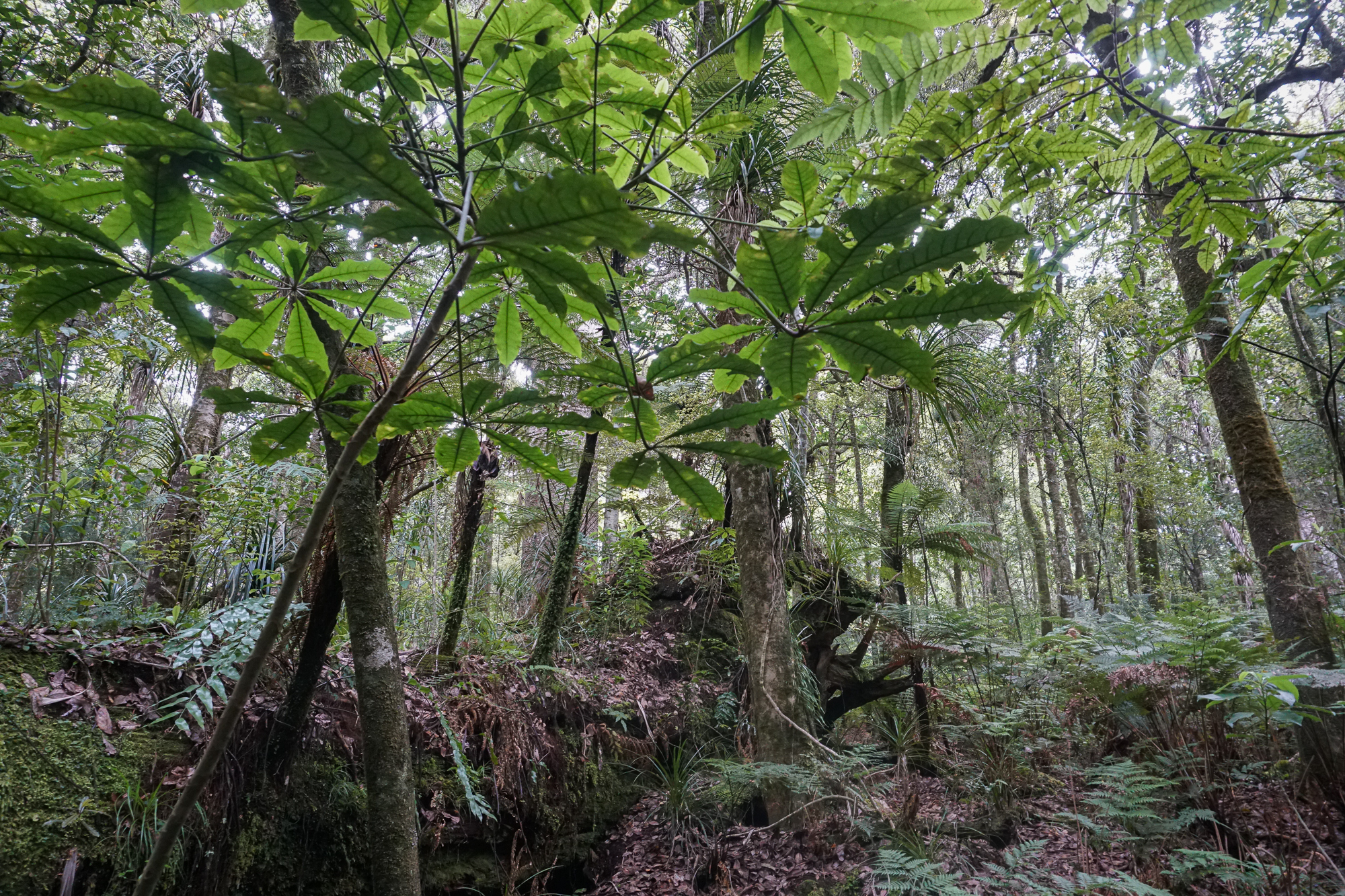
Reconnecting Young Māori & Kaupapa Māori
The brotherhood of the kauri and whale teaches that when the forest is sick look to the sea. The existence of a material & spiritual worldview means that when the child’s knees are sore look for the spooks in the house. The marama cycle and prevailing presence of wai suggest that when something is out of balance, or you find yourself lost, look to the water and rhythm of nature. Working on this project affirmed that while Waipoua and Warawara are the mana in Northland, that mana will fade without proper nourishment. Māori I spoke with expressed the need to look to the hunters and the young people, the ones who deeply know the forest and may learn the forest, to rebuild the mana.
As Western practitioners have engaged with traditional knowledge for scientific advancement, kaitiaki have greeted the convergence of old and new knowledge with optimism for its breadth of possibilities in their communities. Ana Bercich, for one, encourages the intersection of mātauranga Māori and Western scholarship, notably for how it may help young people reconnect with their roots. When we met on the Mitimiti bluffs, she identified the youths who had recently left for University as the ones she believes can merge the two realms and bring their hybrid knowledge back to the area. But Northland is in a critical stage in which young Māori who’ve been disconnected from the ngahere are unable or unwilling to reconnect. A stage in which rāhui that are implemented to protect the forest from a deadly pathogen also hinder cultural exposure for surrounding iwi, causing some locals to argue that a rāhui is not an option if Māori are to maintain a living relationship with the forest. So, before the kids in Mitimiti may attempt to merge the spheres of knowledge, they must first rebuild their cultural connection to the ngahere by learning about and exploring the bush.
When the future of young peoples’ relationship to the forest entered my and Hugh’s conversations with Māori in Northland, the sense of urgency our hosts felt was palpable. The gap between generations of traditional knowledge holders is steadily growing, as was made clear in the relationship with Te Reo and the interaction with the bush that Kevin Prime, Erina Adams, Charlie Dunn, Ana Bercich and Hori Parata spoke of time and time again. Mātauranga is passed down through experience between youth and tūpuna in the ngahere, the beach or at the marae, not in an academic space where the human spirit isn’t touched. If the opportunity to get young people into those situations isn’t created, their descendants will become like everyone else in the country and cease to understand their connection to the land. What Ana Bercich argued, like what Kevin and his colleagues argued regarding the RMA, is for a proactive engagement with the land.
Hugh suggested that there may be two paths – the path of active engagement and rebuilding a connection, and the “business as usual” path in which the psychic door to the ngahere may close for good. Following the first path, Ana has pitched calling the children at Matihetihe marae the Warawara Cadets to encourage them to identify with their role of kaitiaki of the ngahere. Perhaps, with that badge they may do more to nourish their ties to the forest. Then, when they eventually depart for schooling, they may carry the incentive of bettering the ngahere to which they are connected to fuel their studies and return home with new tools to improve their communities.
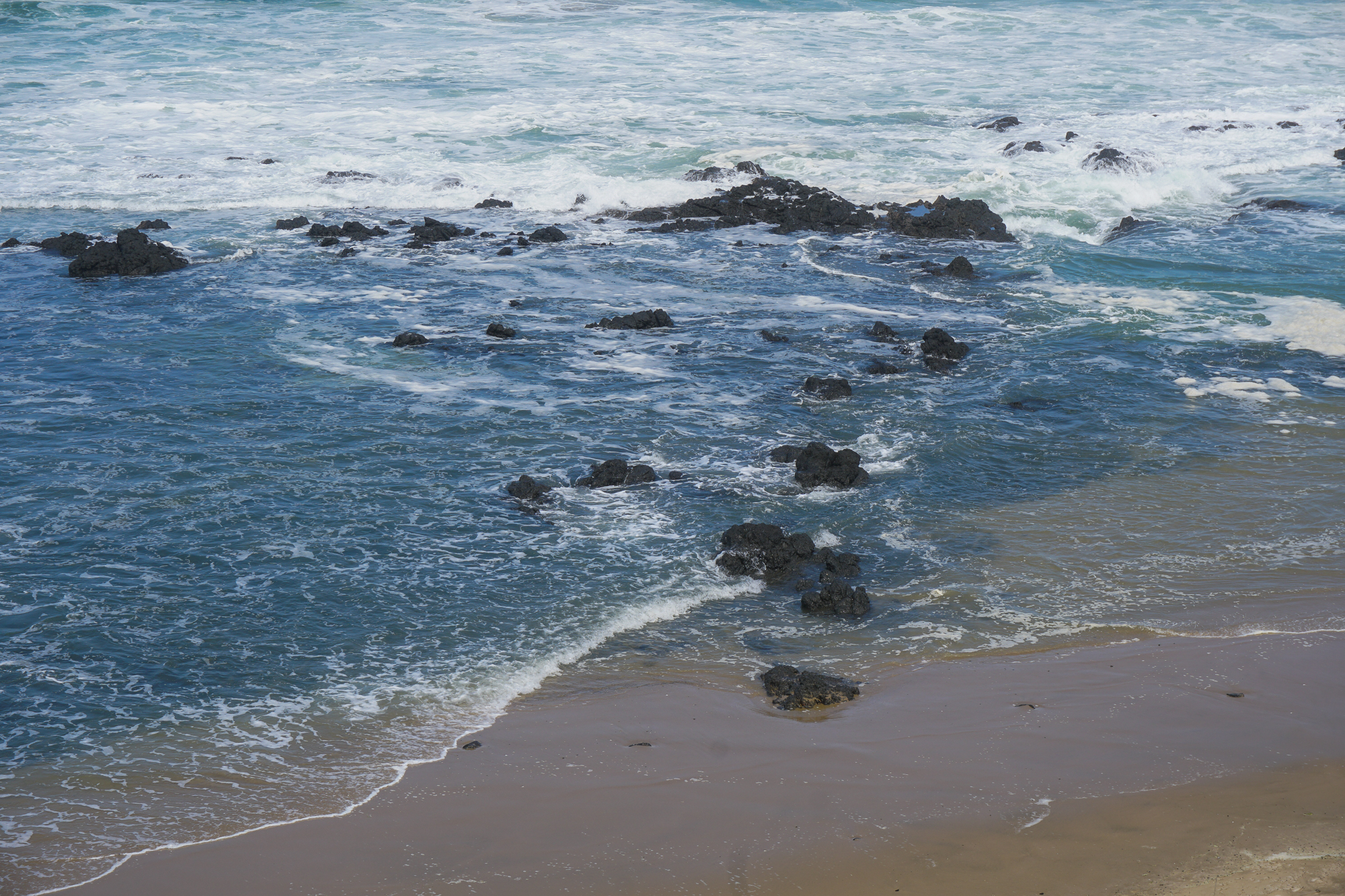
In the meantime, Ana decided that the best thing to do is to introduce the children to people they can aspire toward and expose them to things that are happening in the paper by bringing the experts who are making the headlines to their marae, all while ensuring that their connection to the land is fed through activity. Even then, there is work to be done to establish a convergence of old and new systems. “We’ve got to change a few things,” Ana conceded, “and that’s fine because we are only working on old knowledge. That’s good but there is some new knowledge out there that our children can learn to help us. That’s the way I look at it. We’ve got to have that.”
A big step forward came in October, 2018, when the local school in Mitimiti changed from mainstream curriculum to kaupapa Māori, a curriculum based in local knowledge (fig. 30). In the new system, which Ana called kura-a-iwi, the land is the classroom and the subject matter relates directly to the environment on a hyper-local scale. Ana engaged with students under the new curriculum and reported that the students are learning about kai while standing on the beach and are asking questions about the environment like Why does it happen? When does it happen? When do fish spawn?
Figure 30. Warawara Ngahere: Mitimiti Detail.
A key feature of the new curriculum is that it is taught in Te Reo, ensuring a new generation of young Māori are able to speak their language. This is an enormous milestone for a country that has suffered over past generations from large swaths of people not having access to Te Reo. The newly integrated outdoor-learning and inclusion of Māori language is benefitting young people and serving to close the knowledge gap.
Ana belongs to a generation that didn’t have Te Reo in the classroom. In fact, she shares the experience of Kevin’s first few children of not learning Te Reo at home either. Her parents spoke Te Reo to each other, and she mused that the language barrier was intentional, constructed so that her parents could speak privately. Most of her family in Panguru couldn’t speak Te Reo either, and it has been a big shift for them recently to get back to learning the language of their tūpuna. Ana, like many of her peers, has only recently started to learn the language through internet classes and by practicing with kaumātua. Like Kevin, she raised her children to speak English and now, just like he does, she gets to see her grandchildren back at the marae, tumbling through their rhythmic language.
As for the consequences of kaupapa Māori, Ana sees it as the impetus for many students embracing and nourishing their connection to the land. “In the mainstream schools you’re just a number, a government ID.” But for the first time, she said, “This korero a iwi gives our kids an identity.” An identity that was fading. An identity that Conrad Marsh returned to Waipoua to retrieve.
After the switch, a woman visited the school and asked Ana, “What is the essence of your school? Why and what are you looking for in kura-a-iwi?”
Ana responded with an analogy to the tihe-tihe plant that sits on their beach. “It’s resilient, it resists the westerly winds that are strong, it builds our dunes, it’s flexible so it can move around. All these words I was coming up with and that’s exactly what our children need to be: Flexible. They need to be strong, they need to build themselves up, you know? That’s what tihe-tihe is. It grows here and makes us think... Can we be like that? Can we teach our children to be like that?... They see the tihe-tihe every day and maybe one day they will see, ‘Oh, maybe I need to build up my skill for another subject, or, maybe I need to be flexible’... It’s trying to give our kids something to aim for. I’m sure they have [something], but it’s just building that up so that they become invincible. Nothing will stop them, you know? Nothing will stop them,” she said with certainty.
Though the Māori-based curriculum hasn’t been in place long, it has already prompted a visible shift in the children’s attitude. They are showing up at the marae for hui more frequently and joining adults for walks on the beach to listen to their stories about the land. Part of the shift may be because the traditional knowledge is more accessible and that they are learning it from their teachers and kaumātua in a way that resonates with them. Ana reckons that it won’t be long before the children that are immersed in the curriculum matriculate with the indigenous knowledge that will enhance the new data circulating in modern times. She spoke of many young people who have left and attained great educations, noting the Facebook page her community created to serve as a place of connection for those who have left and those who have stayed in the area. People post in the group with their professional or community updates and use it as a space to invite whānau back home. Ana compared the group to a database of people and their skills that she they use to initiate programming within the rohe.

While some children may take this newly invigorated education out into the world, others may stay in the area and participate in the cultural tourism ventures mentioned earlier. For the prospect of sharing knowledge with someone who wants to learn, like tourists or Western science practitioners, can also motivate young Māori to learn and nourish their living connection so they are able to share that knowledge outward. Perhaps then everyone may be better equipped to understand the environment we all share. According to the kaumātua and tangata whenua of Warawara present at the Komiti Kaitiaki wānanga Hugh and I attended in November, 2019, changes like those in Mitimiti may enable the spirit of connectivity to the ngahere to enter the psyche of young people and survive in the values of their children, regardless of the paths they choose to follow.
While the shift toward bi-lingual schooling and kaupapa Māori is promising, its spread to different areas of Northland has been staggered. In the interim, non-kaupapa Māori schools have agreed to adopt a more inclusive curriculum that shifts the baseline of New Zealand’s education system to reflect the country’s history of Māori-Crown relations. “It was a general consensus throughout New Zealand that we are recognizing Māori. See, only this year has the government decided that New Zealand history would be taught in schools,” Kevin shared, in December of 2019.
New Zealand history, though it may seem like a standard subject to include in New Zealand schools, was something that Kevin’s generation only learned at home, if they learned it at all. “When I was young, we learned about the Phoenicians, King Herod, the British monarchy, we even learned American history. But we only knew New Zealand history from what we listened to at the marae in the oral histories. Anything else that we wanted to know about New Zealand history we had to learn in books. We didn’t learn it in school. Whereas now,” he said, his face lit with disbelief, “the government has made a commitment to start teaching the Treaty of Waitangi in schools.”
Similar to New Zealand history, what a young Kevin understood about the Treaty of Waitangi came from sitting and listening at the marae. “There it was all said in Māori, we heard the Māori version, which is rather different than the English version,” he said.
Unlike the public school curriculum in the United States, which I experienced as failing to sufficiently educate students on the colonial and indigenous history of North America, the New Zealand government is making the necessary amendments, albeit long-awaited, to its education system. With the new curriculums cropping up across the country, students will soon learn about both versions of the Treaty of Waitangi and better understand the colonial history and conflicts that surrounded the Treaty since its drafting.
As a testament to the pace of change, the inclusion of New Zealand history that Kevin mentioned will not be implemented until at least 2022. However, there are bouts of progress occurring in the meantime. “There is an acceptance of tikanga Māori and karakia that I see now that never existed in previous years,” Kevin responded, with subtle wonderment, to the subject of change. He told of a hui where the Chairman of Te Mana a Te Wai (the Advisory Committee for Freshwater Management) asked him to welcome everyone with a karakia and how a staff member at a Ministry for the Environment panel asked him to bless the food after the closing comments of the meeting. “50, even 10, years ago that wouldn’t have been an option in those areas, even in the areas where Māori worked. It’s become more acceptable,” he said.
Notes
- “Te Awa Tupua (Whanganui River Claims Settlement) Act 2017,” Pub. L. No. 2017 No 7 (2017).
- Kennedy Warne, “A Voice For Nature,” National Geographic, April 22, 2019.
- Warne, “A Voice for Nature.”
- “Whanganui Iwi (Whanganui River) Deed of Settlement Summary,” New Zealand Government/Te Kāwanatanga o Aotearoa, accessed December 13, 2020. See section “Background.”
- “Whanganui Iwi Deed of Settlement Summary.” See section “Background.”
- “Whanganui Iwi Deed of Settlement Summary.” See section “Background.”
- “Whanganui Iwi Deed of Settlement Summary.” See section “Background”;
Warne, “A Voice for Nature.” - “Whanganui Iwi Deed of Settlement Summary,” New Zealand Government/Te Kāwanatanga o Aotearoa, accessed December 13, 2020. See section “Redress” and subsection “Ruruku Whakatupua – Te Mana o Te Awa Tupua.”
- Dina Gilio-Whitaker, As Long as Grass Grows: The Indigenous Fight for Environmental Justice from Colonization to Standing Rock (Boston: Beacon Press, 2019), 154-155.
- “Ko Aotearoa Tēnei: Report on the Wai 262 Claim Released,” Waitangi Tribunal/Te Rõpū Whakamana i te Tiriti o Waitangi, July 2, 2011. See section “Wai 262: Questions & Answers.”
- “Te Pae Tawhiti: Wai 262,” Te Puni Kōkiri/Ministry of Māori Development, accessed December 13, 2020.
- Kelly Buchanan, “New Zealand: Māori Culture and Property Laws” (Washington, D.C.: Law Library of Congress, December 2010).
- “Ko Aotearoa Tēnei: Report on the Wai 262 Claim Released,” Waitangi Tribunal/Te Rõpū Whakamana i te Tiriti o Waitangi. See section “Wai 262: Questions & Answers.”
- “Ko Aotearoa Tēnei.” See section “Wai 262: Questions & Answers.”
- “Te Pae Tawhiti: Wai 262,” Te Puni Kōkiri/Ministry of Māori Development.
- “Te Pae Tawhiti: Wai 262,” Te Puni Kōkiri/Ministry of Māori Development.
- “Wai 262: Te Pae Tawhiti - Targeted Engagement Report” (Te Puni Kōkiri/Ministry of Māori Development, 2020).
- “Te Pae Tawhiti: Wai 262,” Te Puni Kōkiri/Ministry of Māori Development.
- Dan Nathan, Te Hiringa o Te Tangata, Ngā Pae o Te Māramatanga (Naetana Productions, 2015)
- “New Zealand’s Environmental Legislation,” The State of New Zealand’s Environment 1997 (Ministry for the Environment/Manatū Mo Te Taiao, 1997).
- “New Zealand’s Environmental Legislation” (Ministry for the Environment/Manatū Mo Te Taiao).
- “New Zealand’s Environmental Legislation” (Ministry for the Environment/Manatū Mo Te Taiao). See section “Effects-based approach.”
- “New Zealand’s Environmental Legislation” (Ministry for the Environment/Manatū Mo Te Taiao). See section “Sustainable management.”
- “5. Alternatives to the Status Quo,” Proposed National Policy Statement on Indigenous Biodiversity: section 32 Evaluation (Ministry for the Environment/Manatū Mo Te Taiao, January 2011).
